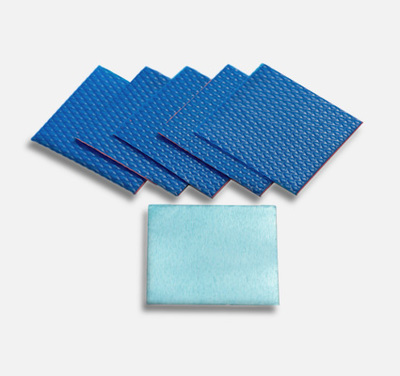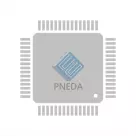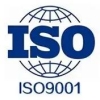Silicon anode technology: electric vehicle endurance breakthrough SiC solution

In this new energy vehicle market, the development momentum is how strong ah! The endurance of such electric vehicles has become a matter of concern. With the continuous development of battery technology, the emerging technology of silicon anode technology is bringing earth-shaking changes to the endurance of electric vehicles! Especially combined with silicon carbide (SiC), the prospects are bright.
Let's start with silicon anode technology. This is using silicon as the negative electrode material for lithium-ion batteries. Compared with traditional graphite anodes, the theoretical specific capacity of silicon can be very high, can give about 4200mAh/g of energy, you see graphite, only 372mAh/g, this gap is very big! This means that a battery with a silicon anode can store more energy for the same size or weight.
This silicon anode has many advantages
First, this high energy density, as just said, the silicon anode has a higher capacity, can accommodate more lithium ions, the total energy output of the battery will go up, which is very important for the endurance of electric vehicles. Nowadays, people pursue long life and high battery energy density, and the competitiveness of electric vehicles in the market will also increase.
There is also lightweight, silicon energy storage capacity is much stronger than graphite, the overall weight of electric vehicles can be reduced, the car is more energy efficient, less energy consumption, mileage can also be extended, many benefits!
There is the fast charging ability, the electrical conductivity of silicon materials is good when charging, the battery with silicon anode is fast, the charging speed of electric vehicles is more convenient, and the user experience will not go up!
As silicon anode technology gets better and better, more and more electric car manufacturers are starting to consider the practical use of this thing. Some well-known automotive brands are working with battery manufacturers to develop battery systems that use silicon anodes. The collaboration not only focuses on improving battery performance, but also considers how to reduce costs and improve production efficiency to achieve mass production of silicon anodes.
In the electric vehicle market, batteries equipped with silicon anodes can not only improve battery life, but also allow users to reduce the number of charges and a better user experience. And with the continuous progress of battery technology, the future battery may use more silicon anode materials, and the improvement of the endurance capacity of electric vehicles is greater.
In order to solve the problem of volume expansion and poor cycling stability of silicon anode, many researchers began to study silicon carbon composite materials. By putting silicon and carbon together, we want to take advantage of the best of both materials, maintain a high energy density and reduce the adverse effects of volume changes. This innovation not only makes the battery last longer, but also performs better at high power discharges.
At present, the battery requirements of electric vehicles are quite high, especially in fast charging and hot weather, the application of silicon carbon composite materials can reduce the risk of battery problems, ensuring that electric vehicles can remain stable in a variety of complex situations.
Then there's silicon carbide (SiC), an important semiconductor material whose applications in power electronics are transforming the design and performance of electric vehicles. The combination of silicon anodes and silicon carbide opens up even more possibilities for electric vehicles.
First, SiC materials have good thermal conductivity and high breakdown voltage, which can improve the efficiency of electric vehicle charging systems. Using SiC devices, electric vehicles have high charging efficiency, short charging time and more convenient use.
Secondly, the combination of silicon anode and SiC technology can improve the energy conversion efficiency of electric vehicles and increase the driving range. For those who need to be away for a long time, so practical!
In the future, silicon anode technology continues to develop, and the prospects for electric vehicle manufacturing are quite broad. Future research and development personnel will pay more attention to the interface design and engineering optimization of battery materials to improve the overall performance of batteries. Battery manufacturers will also continue to look for more cost-effective production methods, making extensive use of silicon anode materials.
The Products You May Be Interested In
 |
ASPI-0628-4R7M-T1 | FIXED IND 4.7UH 3A 31 MOHM SMD | 22608 More on Order |
 |
AMPMDGC-11.0592T3 | MEMS OSC XO 11.0592MHZ CMOS SMD | 8118 More on Order |
 |
AMPMEED-18.0000T | MEMS OSC XO 18.0000MHZ CMOS SMD | 4518 More on Order |
 |
AMPMAEB-29.4912T | MEMS OSC XO 29.4912MHZ CMOS SMD | 5076 More on Order |
 |
AMPMDEB-7.3728 | MEMS OSC XO 7.3728MHZ CMOS SMD | 2034 More on Order |
 |
AMPMGEA-33.3333 | MEMS OSC XO 33.3333MHZ CMOS SMD | 5814 More on Order |
 |
AX5PAF3-1500.0000C | OSC XO 1.5GHZ 3.3V LVPECL | 4644 More on Order |
 |
AX7PBF2-725.0000T | XTAL OSC XO 725.0000MHZ LVPECL | 6048 More on Order |
 |
AX7PBF1-739.3153T | XTAL OSC XO 739.3153MHZ LVPECL | 6480 More on Order |
 |
AX7MBF3-650.0000T | XTAL OSC XO 650.0000MHZ CML SMD | 3096 More on Order |
 |
AX7DBF1-804.3100T | XTAL OSC XO 804.3100MHZ LVDS SMD | 6642 More on Order |
 |
AX5DBF1-716.8000T | OSC XO 716.8MHZ 2.5V LVDS | 6408 More on Order |
 |
AX5PAF4-148.5000T | OSC XO 148.5MHZ 3.3V LVPECL | 7866 More on Order |
 |
ASTMHTD-14.7456MHZ-ZJ-E-T3 | MEMS OSC XO 14.7456MHZ LVCMOS | 6660 More on Order |
 |
ASVMPC-20.000MHZ-Z-T | MEMS OSC XO 20.0000MHZ CMOS SMD | 4572 More on Order |
 |
ASTMHTV-8.000MHZ-AK-E-T3 | MEMS OSC XO 8.0000MHZ LVCMOS SMD | 3564 More on Order |
 |
ASTMHTV-10.000MHZ-XC-E | MEMS OSC XO 10.0000MHZ LVCMOS | 6606 More on Order |
 |
AB-50.000MHZ-B2-T | CRYSTAL 50.0000MHZ 18PF T/H | 7110 More on Order |
 |
ABM11W-20.7360MHZ-4-D2X-T3 | CRYSTAL 20.7360MHZ 4PF SMD | 5994 More on Order |
 |
ABM8W-30.4000MHZ-8-D2X-T3 | CRYSTAL 30.4000MHZ 8PF SMD | 4266 More on Order |
 |
ABM8W-27.0000MHZ-7-J2Z-T3 | CRYSTAL 27.0000MHZ 7PF SMD | 3744 More on Order |
 |
ABM8W-24.0000MHZ-7-K2Z-T3 | CRYSTAL 24.0000MHZ 7PF SMD | 3924 More on Order |
 |
ABM8W-16.6667MHZ-6-B1U-T3 | CRYSTAL 16.6667MHZ 6PF SMD | 3348 More on Order |
 |
ABM8W-19.2800MHZ-4-B2U-T3 | CRYSTAL 19.2800MHZ 4PF SMD | 2394 More on Order |









